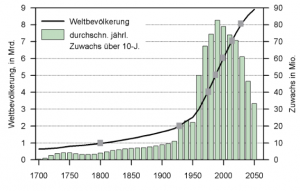World Population Clock
No one could ever count all the people who are born or die every day. The climbing numbers on the World Population Clock in the Maths Adventure Land are based on the calculations of the US Population Reference Bureau (PRB), which has been collecting data on population development and human health worldwide since 1929 and making it available to the public.
The increase in humanity is currently 83,276,563 people per year. This equates to 228,155 people every day, or 158 people every minute, or 2.6 people every second.
According to the DSW data report of the “German Foundation for World Population” from September 2014 — they correspond to the data of the Population Reference Bureau — the world population was 7238 million people (about 7.2 billion).
The following figures were determined for the 5 continents:


